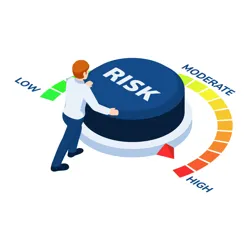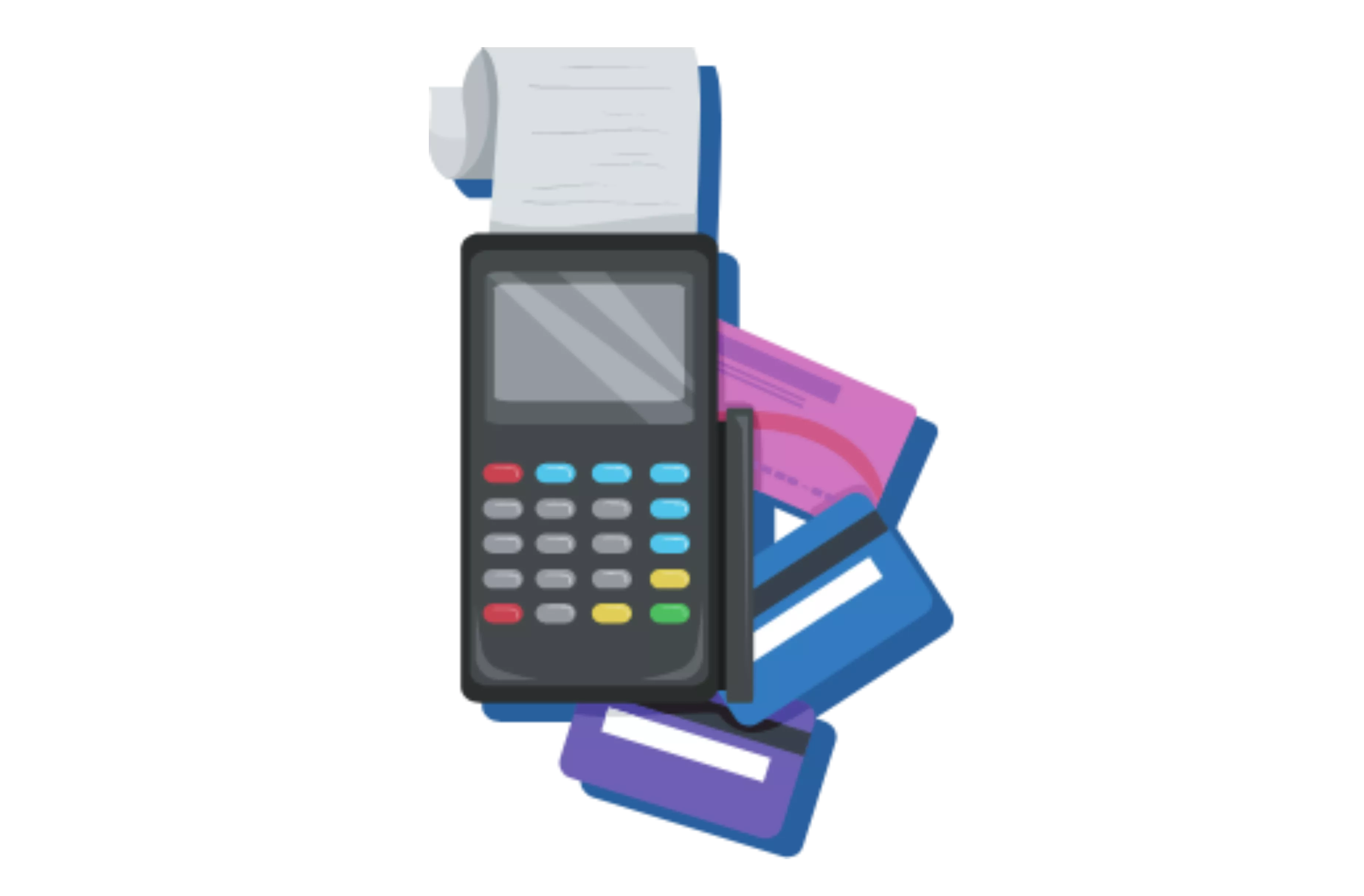TABLE OF CONTENTS
- What Is a High-Risk Business?
- What Makes a Business High Risk?
- List of High-Risk Industries
- Why Is Risk Level Important for Banks?
- What Is the MATCH List?
- Types of Fraud Common to High-Risk Merchants
- How To Determine if You Are a High-Risk Business
- How Can You Avoid Being Labeled as High-Risk?
- What Is a High-Risk Merchant Account?
- Turn Your High-Risk Business into a High-Rewards Business
- FAQs About High-Risk Businesses
Within the payments industry, the term high-risk business describes businesses associated with an elevated risk of financial exposure. (Unfortunately, the phrase has nothing to do with Risky Business—the 1983 film that solidified Tom Cruise’s movie star status and gifted every procrastinator a reliable last-minute Halloween costume.) Below, we explain why the payments industry considers some businesses to be high-risk, the ways this assessment impacts a business’s payment processing, and how to obtain processing support as a high-risk business. Let’s slide on into it!
What Is a High-Risk Business?

As stated above, the phrase “high-risk business” refers to businesses posing an elevated risk of financial exposure. Because financial institutions theoretically aim to reduce their exposure, they often deny services to high-risk businesses. Classification as a high-risk business has far-reaching implications for your payment operations.
To be clear, “high-risk business” may seem negative, but the factors that categorize a business as high-risk, aren’t inherently negative. It’s simply that many financial institutions rely on policies antiquated by modern business methods, thus their risk assessment favors old-fashioned business models.
What Makes a Business High Risk?
Within the payment industry, there are numerous reasons a business may be considered high risk, many of which are surprisingly ordinary business practices. In fact, so common that business owners do not even realize their business is high risk until attempting to obtain a merchant account!
While the exact risk assessment algorithm varies by financial institution, below are the six most heavily-weighted factors in determining the risk level of a business:
1. Industry Type
Financial institutions consider some industries high-risk for a variety of reasons. For example, industries subject to extra government oversight—such as firearms, tobacco, and alcohol industries—are considered high risk due to regulatory restrictions. Conversely, industries recently made subject to less regulation, due to favorable changes to the legal system, can be high risk. As a result of its legality trending favorably, these industries are often suddenly less culturally taboo and in high demand. Yet, tier-one financial institutions still view these booming industries as high risk and deny their services to those operating within them—ironically, denying payment services to the businesses that need it most.
Additionally, industries in which the average transaction amount skews higher, such as the jewelry industry, are considered high risk. Even the agriculture, construction, and accounting industries, too, can fall into the high-risk category due to their seasonal nature resulting in inconsistent revenue.
2. Processing History
Your business’s processing history delivers a diagnostic assessment of your business’s financial health. When reviewing your history, processors determine your chargeback ratio, the speed with which you scaled, and other related elements. If you have six months of processing history, institutions can determine how well your business will do in the future.
Additionally, your processing history reveals what types of payment methods you most frequently accept (known as card mix), be it internationally- or domestically-issued cards, debit or credit cards, or other payment methods. For example, accepting international cards is riskier than accepting domestic cards.
3. Chargeback History
A chargeback occurs when a cardholder asks the issuing bank to reverse a charge. Businesses receiving too many chargebacks are high risk to financial institutions because chargebacks indicate fraud or poor business practices.
How many chargebacks are too many chargebacks? Typically, tier-one banks allow a maximum of a one percent chargeback ratio in any given month. However, most banks don’t disclose whether they calculate this ratio in the number of transactions or dollar amount, leaving you in the dark as to whether you’re nearing the threshold.
Meanwhile, high-risk merchant account providers set their chargeback ratio threshold higher—in some cases, up to three percent. Additionally, these processors often request a chargeback mitigation plan or place you on a probationary period if you cross their chargeback threshold. Tier-one banks simply revoke your merchant account upon crossing their chargeback threshold.
4. Personal Credit Score
Business owners with bad credit tend to struggle to secure credit card processing. When financial institutions assess your business’s risk level, your personal credit score is a factor. Even if your business structure acknowledges your personal assets and business assets as separate legal entities—as is the case for limited liability companies—institutions evaluate your personal credit.
A merchant account application may be denied by top-tier banks solely based on the applicant’s personal credit score. Luckily, entities issuing bad credit merchant accounts exist and can work with an unfavorable credit score alongside other factors.
5. Bank Statement Activity
Like your processing history, your bank statement activity gives a diagnostic view of your business’s financial health. From your business’s bank statement activity, financial institutions can assess if you have enough capital to properly fund your business, a proper system to avoid overdrafts, and other habits in place indicative of financial health. They use this information to determine how much of a credit facility to extend upon approval.
6. Method of Payment Acceptance
As stated above, your processing history reveals what payment methods your business frequently accepts. Some payment methods are more secure than other payment methods, thus lowering your business’s assessed risk.
There are two methods to accept credit cards: card-present and card-not-present. Fairly self-explanatory, the card-present method refers to any payment paid with a physical card at your business’s location. Meanwhile, card-not-present encompasses all payments in which the card is not physically present, including payments made online or over the phone. More vulnerable to fraud and chargebacks, card-not-present payments are a higher risk than card-present payments—primarily because the merchant cannot confirm the identity of the cardholder.
Today, allowing customers to purchase goods and services online is a common, if not expected practice. Yet, this card-not-present payment method raises the level of risk tier-one banks associate with your business. The criteria by which tier-one banks determine a business’s risk level has utterly failed in keeping pace with innovations in financial technology.
Card-present payments include payments made:
- By swiping a magnetic stripe card
- By inserting an EMV chip card
- Contactless via NFC technology
- In-store with a mobile wallet, such as Apple Pay, Samsung Pay, etc.
Card-not-present payments include payments made:
- Online
- Recurrently with a card on file
- Over the phone
- Through mail order
- In-app or online with a mobile wallet
List of High-Risk Industries
The industry into which your business falls is a—if not the—pivotal factor in determining your business’s risk level. Though risk level assessment metrics differ between banks, the following lists industries considered high risk throughout the payments landscape:
- Adult
- CBD & Hemp
- Cigars & Tobacco
- Credit Repair
- Debt Collection
- Debt Consolidation
- E-Cigarettes & Vapes
- Firearms
- Gambling
- Nutraceutical Supplements
- Smoking Accessories
- Tech Support
Note: The above is not an exhaustive list. There are many other high and low-risk industries that we support.
Why Is Risk Level Important for Banks?
It’s important to remember that a business’s acquiring bank or payment processor takes on a lot of risk by guaranteeing each transaction. The bank or processor essentially extends microloans with the assumption the merchant provides the promised products and the cardholder doesn’t dispute the transactions. In the event of a merchant failing to deliver the promised products or a cardholder disputing the transaction, or poses a financial risk to the bank or processor in terms of potential liability. As a result, assessing the level of risk associated with providing services to a business is extremely important for banks, processors, and other financial institutions.
What Is the MATCH List?
Created and managed by Mastercard, the Member Alert to Control High-Risk Merchants (MATCH) list is an electronic database of high-risk merchants to avoid. Financial institutions typically screen merchants through the MATCH list to verify whether they have a history of poor business activities or have ever had their ability to process payments revoked. However, it is solely up to the financial institution whether or not it rejects an application based on the information found on the MATCH list.
Types of Fraud Common to High-Risk Merchants
Increased exposure to fraud raises a business’s financial exposure. As a result, the industries, business models, operational practices, and payment methods more vulnerable to fraud are considerable factors in a business’s risk assessment. And yet again, this often results in businesses most in need of secure payment solutions being denied those very services.
In addition to exposure to fraud, financial institutions consider the likelihood a business will commit fraud. Elements indicating merchant fraud—a short processing history or a high chargeback ratio—heavily affect your business risk assessment.
How To Determine if You Are a High-Risk Business
Now that you’re familiar with the most important determining factors in a business’s risk level assessment, you can easily determine whether the payments industry considers your business to be high risk.
- Industry Type: Based on your MCC, determine whether you operate within a high-risk industry.
- Processing History: Based on at least six months of processing history, assess your business’s financial health.
- Method of Payment Acceptance: While reviewing your processing history, also assess whether your card mix or payment acceptance methods carry transactional risk.
- Chargebacks History: Calculate your chargeback ratio based on the transaction amount and dollar amount to determine if either ratio places your business within the high-risk range.
- Personal Credit Score: Obtain your personal credit score and determine if it’s favorable.
- Bank Statement Activity: Much like your processing history, assess your bank statement to determine your business’s financial health.
It’s worth noting that certain—and again, very common—operational procedures can elevate the risk level associated with your business. These procedures include dropshipping, multi-level marketing, and recurring payments. Additionally, financial institutions often consider businesses with a high volume of sales to be high risk, even though increasing sales is a goal of almost all businesses.
How Can You Avoid Being Labeled as High-Risk?
It bears repeating that a high-risk consideration is not an inherently negative label. It simply means that a business doesn’t meet the strict, often outdated metrics by which the payments industry assesses risk. With that said, there’s no reason to avoid the high-risk label. And for many businesses, there’s no way to avoid being labeled as high risk without changing something absolutely integral to the business.
Take Responsibility for Risk Factors You Can Control
You may not be able to change your business’s industry type, and you may not want to change your business’s accepted payment methods. But your chargeback ratio, this you can and should proactively manage—even if for no other reason than avoiding chargeback fees. By customizing a high-risk payment gateway to include security measures like address verification service, CVV matching, and 3D secure technology, you can not only prevent chargebacks, but fraud too.
Why Do Chargebacks Matter So Much?
A high chargeback ratio may indicate that a business engages in poor operational practices, commits merchant fraud, or is a target of fraudsters. To state the very obvious, none of these are good things. In fact, these are things financial institutions quite literally strive to avoid. And one way they avoid these unfavorable situations is by denying their services to businesses with high chargeback ratios.
Chargebacks are also expensive. In the event of a chargeback, a business loses the transaction funds and any funds spent securing the sale, all while incurring a chargeback fee. If you don’t have funds in your merchant account (or reserve account, if applicable), your acquirer and/or processor may be held responsible for these costs. For this reason, financial institutions stay away from these kinds of situations by working with merchants with low chargeback ratios instead.
To conclude, avoid chargebacks so financial institutions don’t avoid you.
What Is a High-Risk Merchant Account?
The short answer: A high-risk merchant account is the solution to a high-risk business’s payment-related problems.
The long, technical, boring answer: A merchant account is a type of bank account in which transaction funds sit until final settlement, at which point processing fees are deducted and funds are transferred to the merchant’s business bank account. A necessary tool for accepting credit and debit cards, merchant accounts are obtained from a merchant service provider. However, these entities aim to issue merchant accounts while minimizing their financial exposure and often deny merchant account applications from high-risk businesses. As a result, high-risk businesses must obtain high-risk merchant accounts in order to accept credit or debit card payments within their operations.
Turn Your High-Risk Business into a High-Rewards Business

Overall, the payments industry assesses risk based on antiquated standards neither incentivizing technological innovation nor satisfying the immovable force of customer demand. These outdated standards have led to many businesses being classified as high risk for the sin of utilizing modern technology or meeting a modern demand. But at PaymentCloud, we think of high-risk businesses as highly-rewarding businesses. We take pride in facilitating the process of obtaining a high-risk merchant account and connecting our clientele to the resources necessary to support their payment operations. If your high-risk business is feeling the need, the need for speed in payment processing at the most affordable available rates, contact us today!
FAQs About High-Risk Businesses
What are some examples of high-risk businesses?
With so many factors, there’s no one-size-fits-all high-risk business type. Also, a business can be a high-risk business due to its chargeback ratio, processing history, or sales volume, all of which may change over time.
That said, if a business falls into a high-risk industry or its operations utilize high-risk procedures, it will be categorized as a high-risk business. An example of this is an adult website allowing consumers access via a monthly subscription plan.
Is there one industry with the highest risk?
Throughout the payments industry, there’s not one industry universally considered the highest-risk industry. However, certain merchant category codes (MCC), a code that dictates industry, are linked to more risk than other codes. These high-risk mcc codes are associated with the cannabis, e-cigarette, pharmaceutical, and tobacco industries.
Do “low-risk” businesses really exist?
The above explored the most crucial contributing factors to a business’s high-risk consideration. Determining factors that may lead to a business’s low-risk consideration are as follows:
- Zero to low chargeback ratio
- Operating in a low-risk industry
- Low average ticket size
- The majority of transactions are card present
While the term “low risk” has a positive connotation, a low-risk consideration is neither inherently positive nor something for which to strive. For example, many businesses aim for higher average ticket sizes, as this typically leads to more profits. Businesses shouldn’t attempt to limit or lower ticket sizes to achieve a low-risk consideration. Additionally, many businesses, like jewelry retailers, simply cannot achieve a low average ticket size due to the nature of their business.
There are factors that businesses can and should attempt to control, like their chargeback ratio. However, many risk assessment factors are elements ingrained into businesses. That said, it’s best not to view low risk as positive or high risk as negative.
What is a high-risk transaction?
There are several reasons a transaction might be deemed high risk. If the product is subject to government regulation—for example, products sold in the firearms, tobacco, and liquor industries—this may be considered a high-risk transaction. A high ticket amount, typically anything over $5,000, may also be considered a high-risk transaction. Even future delivery live ticket sales (concert, festival, and airline tickets) are considered high-risk transactions, as the lead time allows for more unpredictability and an increased likelihood of chargebacks.








